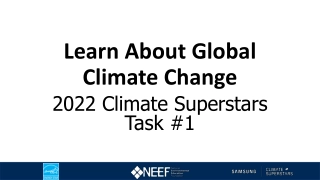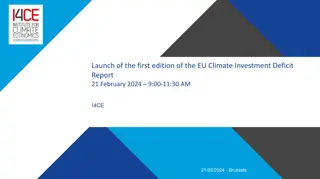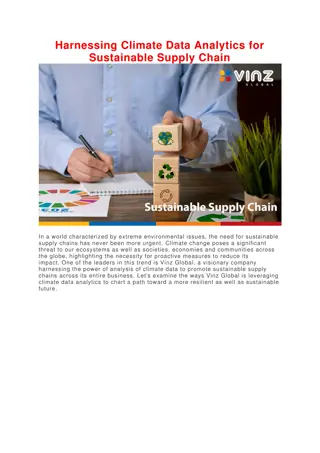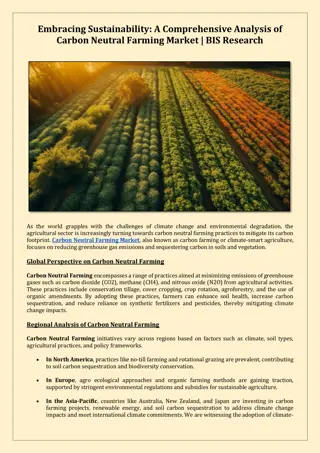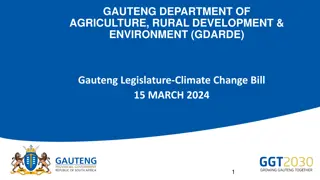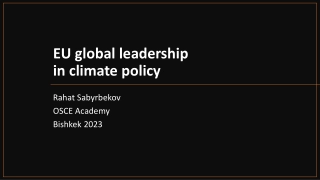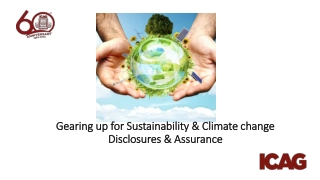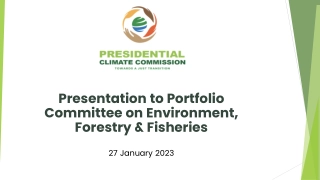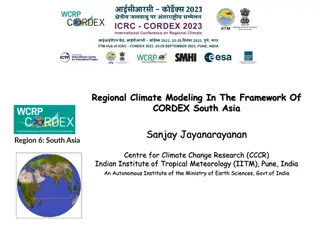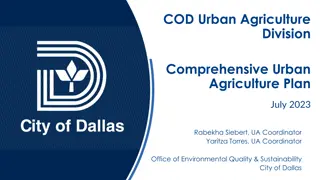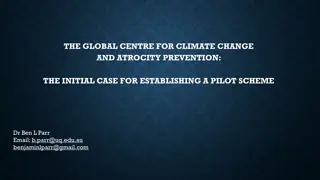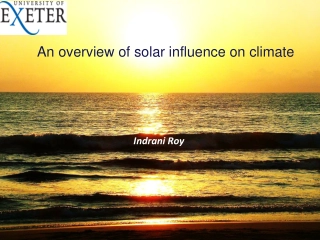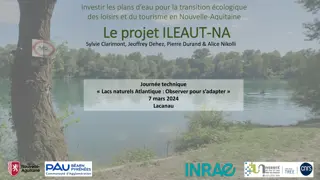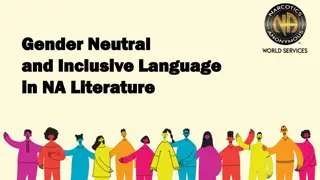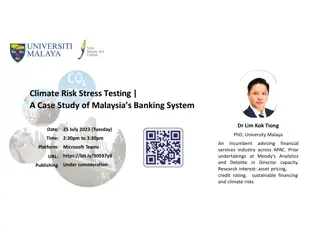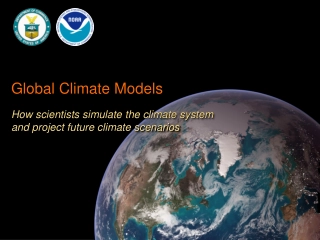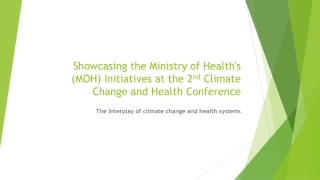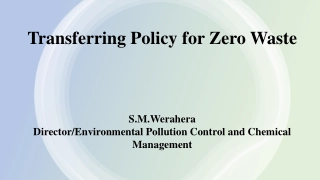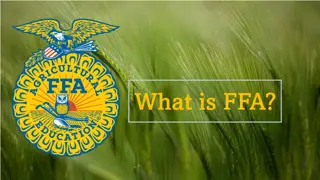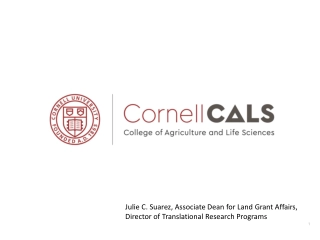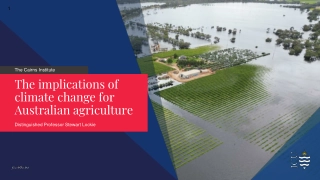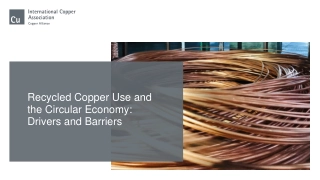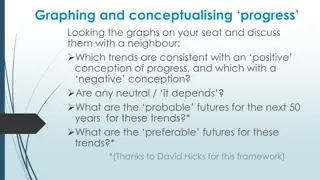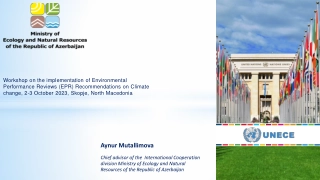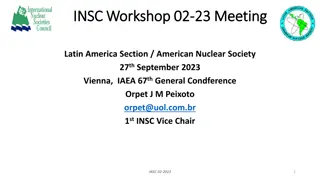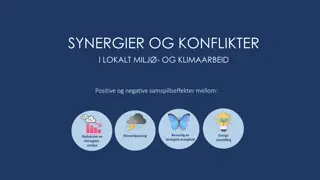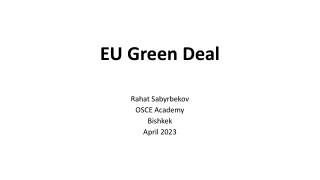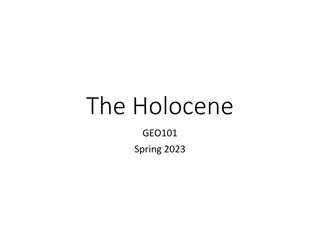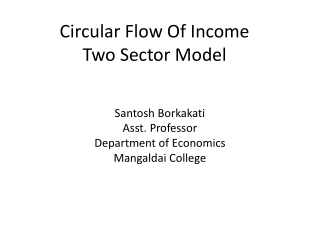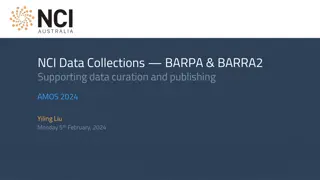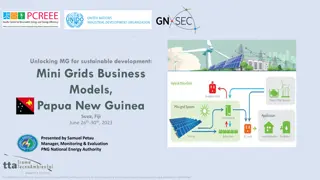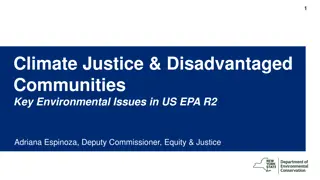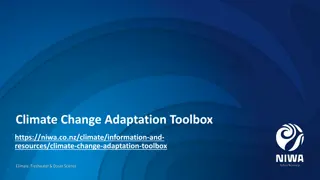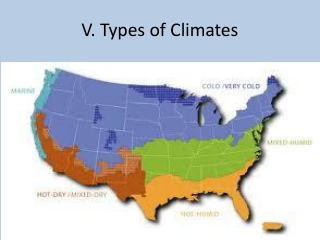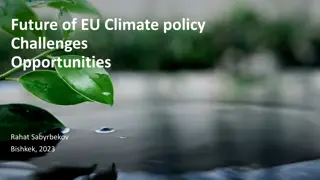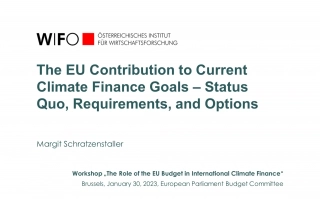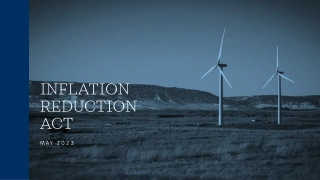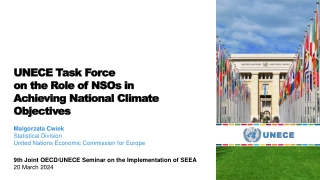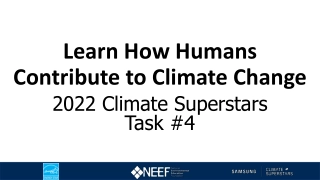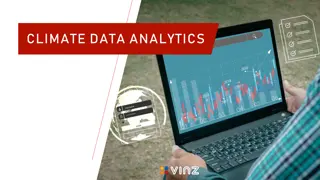Towards a Circular and Climate-Neutral Society: Insights into Dutch Agriculture Transition
Explore the transition towards a circular and climate-neutral society in the Netherlands, focusing on circular agriculture practices, sustainable nature-inclusive systems, and the challenges and strategies for achieving environmental goals. Learn about the role of agriculture in the circular economy, the nitrogen crisis, and the importance of connected circularity in agrifood sectors.
- Circular Agriculture
- Climate Neutrality
- Dutch Agriculture
- Transition Management
- Sustainable Practices
Towards a Circular and Climate-Neutral Society: Insights into Dutch Agriculture Transition
PowerPoint presentation about 'Towards a Circular and Climate-Neutral Society: Insights into Dutch Agriculture Transition'. This presentation describes the topic on Explore the transition towards a circular and climate-neutral society in the Netherlands, focusing on circular agriculture practices, sustainable nature-inclusive systems, and the challenges and strategies for achieving environmental goals. Learn about the role of agriculture in the circular economy, the nitrogen crisis, and the importance of connected circularity in agrifood sectors.. Download this presentation absolutely free.
Presentation Transcript
Towards Circulair and Climate Neutral Society Saskia Visser Input by: colleagues fro Wageningen-UR & TerraEnvision
My talk Introduction to (agriculture in) the Netherlands Circular agriculture Transition First steps towards (Examples) Perspectives for action: Transition management (Some Soil slides) 2
The Netherlands https://youtu.be/eUjWdS-z5AA
Some figures The Netherlands is the second largest exporter of agri-food products, worldwide 12 R&D centres of the world s top-40 food & beverages companies are located in the Netherlands. World largest auction for flowers and plant is located in Aalsmeer, the Netherlands
The Nitrogen crisis Farmers protest
Strategy: Circular agriculture A form of sustainable nature inclusive agriculture in which the cycle of substances is closed. This means that all substances that disappear from an area as a result of agriculture are also returned to that area. 8
Circular Economy in AgriFood: Connected Circularity P, N Connects Agriculture, Nature and Food Smart use of all produced biomass: as product and revolving resources in a connected circularity Adding value to residual biomass as revolving resource (Co-products) Explicit on role of animals in food systems Choices on land-use within the circular systems Has consequences for the human diets
Transition Processes & Management Optimising Business as usual Stabilization Increase sense of urgency Institutio- nalization Reduce dependencies Emergence Reduce relevance Acceleration Experiment Phase out Visser et al., 2019 after Loorbach et al, 2018
Dutch ambitions: circular agriculture (related to soil & nutrients) Soil Health indicators By 2030: Use of fossil-based fertilisers and pesticides is significantly reduced/abandoned Nutrients in both animal and human excreta are more efficiently used in the production circle No more discharge of nutrients to surface water. All agricultural soils are sustainably managed, with attention for (soil)biodiversity. Farmers have a good income BODEMTOP Annual gathering of all Soil Stakeholders 13
WUR activities in Circular Agriculture Innovation Test farms Farmer income Educate professsionals 14
Open cultivation in Circular agriculture Optimal use of arable land Strips and New crops Double purpose crops and rotations Organic precision fertilization Robust crops with healthy plants Nature-inclusive cropping systems Technology
Performance characterized by Land Equivalent Ratio = sum of the relative yields Y Y Yi: yield crop i in intercrop Mi: yield crop i in sole crop = + LER 1 2 M M 1 2 Intercropsystem LER 1.21-1.58 1.23-1.26 1.13-1.34 Wheat/maize Wheat/soybean Fababean/maize LER = land area that would be needed as sole crops to produce the same yield as a unit area of intercrop Fang Gou, 2016
Production Soil quality Biodiversity Croprotations Crop Diversity works! Agroforestry Beillouin et al 2019, DOI 10.1016/J.DIB.2019.103898 Mixed cropping 18
Open cultivation in Circular Agriculture 45 Wheat Maize strips 40 Territoria per 100ha 35 30 25 20 15 10 5 0 Gele Kwikstaart Grey Wacktail Graspieper Lapwing Meadow pipet Oister catcher Skylark Kievit Scholekster Veldleeuwerik Demonstratie gebied (444ha) Strokenteelt Strip cultivation Referentiegebied (454ha) Reference area (454ha) Demonstration area (444ha) 19
Livestock in circular agriculture Kernebeek, 2018
Climate research Livestock Four focus areas : Demonstration en monitoring of CH4 emissions from stables and outside manure storages (reference points) Pilot- en demonstration projects of reducing techniques Development of farm monitoring with sensors Entheric methane emission: measuring variation between animals On Farm research: 21 locations in NL Dairy Goats Veal calves Pigs 22 Annemarie Groenestein- 2019
Circle of Nutrients: 5R-Strategy for optimizing the nutrient balance 1. Reduce nutrient inputs, where possible 2. Reuse nutrients from organic residues (inc. manures) 3. Recover nutrients from biomass waste streams 4. Reduce nutrients losses to surface water 5. Redefine systems, where needed
SYSTEMIC Systemiclarge-scale eco-innovation to advance circular economy and mineral recovery from organic waste in Europe
Technical Innovation at demonstration plants Feedstocks Pig manure Poultry litter Sewage sludge Energy crops Agro-industrial residues Innovative Technologies Reverse Osmosis (RO) Evaporation N-stripping P-stripping End Products Biogas NK concentrates (NH4)2SO4fertiliser Struvite & Ca phosphate Organic fertilisers and soil improvers Organic fibres Downloads: (www.systemicproject.eu) Technical Factsheets of demoplants Newsletter of demoplants
Conclusions It s difficult to produce the precise quantities of animal-sourced food in the EAT-LANCET diet. In the EAT-LANCET diet, poultry was preferred from a health perspective, but from a circularity perspective pork and (dairy) beef are better suited to upcycle low opportunity cost biomass into animal sourced food. Including co-products from refined grains increased the scope for poultry. But also increased land use. GHG emissions and land use were lower in circular scenarios compared to the EAT-LANCET reference scenario. 27
DID you know....? EU farmers have higher trust on Crushed feathers (chicken waste) Potential of biomass streams from peers. Farmers build digital improve resilience of sugar beets food processing, retail and relationships with other farmers to against soil pathogens catering, used for BSF production form CoP. Change their practice yields could replace typically 50 to based on information by (Postma et al. 2021) 75 kton soy-beans. digital farmer influencers and validated by their peers (Vellinga et al. 2021) (SoilCARE 2021) 28
Transition recommendations; beyond the pioneers Income from Milk+ Income for environ mental services + Income Cost - Living labs are key in transition processes in practice. Social learning is the main function of experiments; yet there is a poor exchange of ideas and solutions between the experimental areas. Also, the exchange of experiences to the non-experimental areas has not (yet) started. (Bouwma, 2021) 196 pioneering farmers have adopted the circular principles, and proof it is possible to be a sustainable producer and earn a good income. Many interventions have long-term busines effects. Difficult to compensate for increased labor. Few circular business options will Sell Themselves . Circular innovations therefore require more policy management than ordinary innovations. A number of business options require regulatory changes (Hoes and van Lauwere, 2020) 29 Hoes & de Lauwere; 2020, 2021 Hoes et al. 2021
Transition management: actions Increasing sense of urgency and pressure for change Optimising Business as usual Break existing structures Stabilization Corrective barriers Institutiona- lization Reduce dependencies Formalise direction Challenge the existing order Mobilise means Chaos Steering break down, adjustment and phasing out. Emergence Reduce relevance Acceleration Connect and Structure Experiment Phase out Experimental space including scaling Visser et al., 2019 after Loorbach et al, 2018
Circular agriculture adds profits to climate and nature Circular & Mitigation Better use of residual flows for feed Better use of manure for fertilization Smarter use of fields and meadows Capture carbon in soil and vegetation
Funding mechnism Public Private Collaborations Society Government Knowledge institutions Business commity
What is your relationship with the Soil? Soil has many functions Good soil management is beneficial for everyone " Little bit of action perspective for smart soil management 34
We are not Kind for our soils Subsidence vs climate Soil compaction Manure vs Soil biodiversity 35 Foto margot de Cleen Foto Margot de Cleen
You don't know what you're missing until she's not there... Foto margot de Cleen 36
Vulnerabilities Flood Flooding Dieren Soil erosion Heat stress Nature fire Rheden Velp 37 Arnhem
System features landscape > city A' A Soil moisture grondwate r hangwater Superficial runoff < 100 mm/d Soil storage GHG (summer) > 700 mm/d 38
Strategy > measures Handelings- perspectief store hold Combat moisture deficiency eliminate Always sufficient soil moisture
All soils / land perform all functions but different parts of the land(scape) are better at delivering different functions 40



